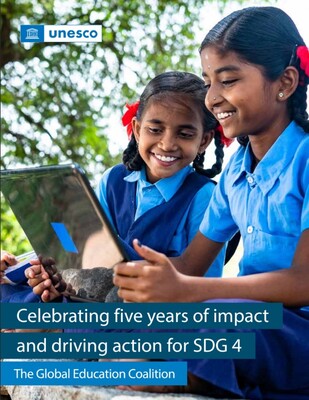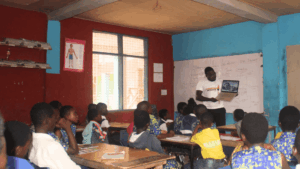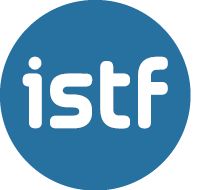ISTF and SeedScience Partner to Build Sustainable Teacher Training in Sub-Saharan Africa
As part of its strategic mission to improve STEM education worldwide, the International Science Teaching Foundation (ISTF), together with SeedScience, reached over 600 students in Tanzania, Uganda, and Ghana in a teacher training pilot last year. Local teachers were trained to use Science Bits, a middle school science education program designed on the basis of research on how people learn. Our starting point was 600 students in three countries who learned science by doing science. This year, our goal is to reach 6,000 students!
ISTF, 12 de enero de 2023

A teacher explains Electricity using Science Bits in a classroom in Ghana.
Science is universal but science learning is local. Although students around the world study the same core scientific concepts—such as electricity or the cell—classroom conditions vary greatly. Students in Tanzania, Texas, or Tokyo have completely different learning environments. In many African countries, scientific concepts remain the same, but the teachers who introduce them to young learners often have limited training and experience.
In addition, many schools in West and East Africa lack basic infrastructure such as running water and electricity. Teaching materials are often outdated or unavailable. What works in Texas or Tokyo may fail in Tanzania: a very different approach is needed. Over the years, our partner SeedScience has learned firsthand that only projects with a long-term vision bring lasting results. Achieving real change is time-consuming and requires persistence. Although progress may be slow, transformation is possible—but it takes time and effort, much like learning science itself!
In this context, both students and teachers embraced the project with great enthusiasm. The ISTF and SeedScience pilot also caught the attention of UNESCO’s Global Education Coalition, which featured it in its 2024 annual report.
Lasting Change Begins Locally
Perhaps surprisingly, many science teachers in Africa have not been trained in science. To ensure they had access to quality classroom materials, we provided teachers with Science Bits, a complete digital platform for teaching and learning science at the middle school level. The user-friendly curriculum includes comprehensive teaching guidance, evidence-based pedagogy, and thousands of hours of ready-to-use lessons that teachers can adapt to their context.
The initial pilot to introduce Science Bits in Sub-Saharan Africa began in Ghana, Tanzania, and Uganda. Understanding the teachers’ challenges was key, and collaboration among SeedScience, ISTF, and the teachers themselves helped define a common goal: improving student learning outcomes. One major challenge was the lack of digital skills. Training teachers to navigate a digital curriculum like Science Bits—exploring its structure and understanding the rationale behind its design—required considerable effort.
Together, we explored what Science Bits includes and how to teach with it. We discussed classroom best practices and how materials could be adapted to students’ needs. Our main focus was to use Science Bits as a teacher training tool: teachers learned how to plan effectively, understand lessons and learning objectives, and help their students grasp key scientific concepts.
Empowering Educators: The Key to Science Bits’ Success in African Schools
While we were confident that Science Bits could benefit teachers everywhere, regardless of their context, a pilot program was launched in five classrooms across Tanzania, Uganda, and Ghana. Each of these Sub-Saharan African countries has its own local and national realities, and each teacher brought unique skills and perspectives to the classroom! The pilot proved to be a resounding success. However, in order to replicate it, we needed to understand what made it work.
Mentoring played a crucial role, helping teachers build a supportive professional community. Through regular sessions, teachers could share experiences, discuss what worked, and exchange ideas and best practices.
“[It’s] always very difficult to explain without visual aids, not easy to find in my country. The video was truly helpful and students began to find science fun and easy to understand because they could relate each topic to their daily lives and surroundings.”
Hannington Senono, a teacher at Aroma Memorial High School in Uganda.
Using Science Bits, teachers realized that students were more engaged when learning involved discussion, activation of prior knowledge, and curiosity about the world around them. The results of the pilot phase were remarkable: more than 600 students reached in a single school year (2024) and universally positive feedback describing the experience as “revolutionary!”
“The demonstration and contextualization of topics, combined with the possibility of connecting science to real-world problems, were particularly effective,” said Hannington Senono, a teacher at Aroma Memorial High School in Uganda. He thought that Science Bits was especially helpful in teaching astrophysics: “[It’s] always very difficult to explain without visual aids, not easy to find in my country. The video was truly helpful and students began to find science fun and easy to understand because they could relate each topic to their daily lives and surroundings.”












Leave a Reply